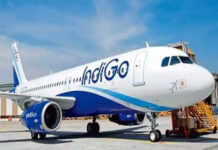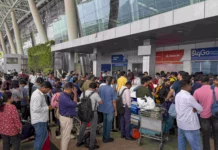 Well known for tea industry &
Well known for tea industry &
eco-tourism
Until the early part of the eighteenth century, Darjeeling was under the king of Sikkim. Later Gorkhas invaded the region and annexed the area, which they eventually lost to the British. The British used the place to escape the heat and found the strategic importance of the area. They, hence, developed the area as a hill station and tea-growing area. Darjeeling is well known for its tea industry and eco-tourism.
Darjeeling is thought to be derived from the word Dorjeeling, which literally means ‘the place of Dorjee’ the majestic thunderbolt. Some believe that the thunderbolt belongs to the Lamaist religion and some believe that it belongs to Lord Indra.
Timber, tea, and tourism underpin the economy of Darjeeling. The tea plantations were originally developed by the British. Oranges and cardamom are also available in plenty. Traditional arts and crafts of Tibet and Sikkim are the products available for shopping. Traditional Tibetan and Sikkimese food as well as other Indian cuisines are available.
Rain can be expected any time in a year. Summer and spring are the two seasons most popular with the visitors. Darjeeling is a famous destination for Bollywood and Bengali film shooting.
The most popular and ubiquitous mode of transport is a four-wheel drive. Land Rovers, especially, are the choice of tourists. They can easily serpentine through the steep and sometimes narrow roads of the hill.
Several local festivals are celebrated throughout the year. The festivals are colorful and the visitors should ensure that they are in Darjeeling to take part in the celebrations.
 Tourist attractions
Tourist attractions
Kanchenjunga: Kanchenjunga is the third highest mountain in the world (the first two being Mount Everest and K2), standing at an altitude of 8586 m. There are five peaks in Kanchenjunga. If you watch Kanchenjunga from the Observatory Hills, you might be deceived that the mountain is a calm and serene upheaval of ice and snow.
Passenger Ropeway: One of the most beautiful attractions of Darjeeling, the passenger ropeway starts at North Point, about 3 km from town. This is India’s first passenger ropeway. This ropeway, which is 5 kilometers long, connects Darjeeling with Singla Bazaar on the Ranjit River at the bottom of the valley.
Trekking: Darjeeling is the first hill station of India where organized trekking was first conducted. It was in the year 1840 that the first organized trekking route in India was established here along the Singalila range. Since then, the breathtaking picturesque views of Everest and Kanchenjunga have been attracting thousands of nature lovers from different parts of the world.
Darjeeling Toy Train: The Darjeeling Toy Train made its first journey in September 1881. The Darjeeling Himalayan Railway acquired UNESCO’s endorsement as a World Heritage icon in 1999. The journey starts from Siliguri and at Chunamandi the train comes to its z-crossing, starting the zig-zagging or reversing in order to attain higher elevation. Sensation corners, which are nothing but loops, are excellent viewing points.
Batasia Loop: Batasia Loop, a massive railway loop around 5 km from Darjeeling is a great place to enjoy a 360 degree view of the beautiful landscapes of Darjeeling and the majestic Kanchenjunga range. It was built with the aim of lowering the gradient of ascent of Darjeeling Himalayan Railway. Commissioned in the year 1919, Batasia Loop commands wonderful view of the serene surroundings with snowcapped mountains of the Eastern Himalayas.
Coronation Bridge: Coronation Bridge, also known as Sevoke Coronation Bridge, was built in 1930 at the confluence of Rangeet River and Teesta River in West Bengal to mark the Coronation of King George V. This bridge, located close to Sevokeswari Kali Mandir in Siliguri, is a very important in the north east region of India and connects Darjeeling with Jaipalguri.
Himalayan Mountaineering Institute: Everest Museum and Mountaineering Museum are entered through the Himalayan Mountaineering Institute Zoo. The zoo and the two museums are run by the Himalayan Mountaineering Institute, which trains mountaineers.
The mountaineering museum has a grand collection of historical mountaineering equipment, specimens of Himalayan flora and fauna, and a relief model of the Himalayas.
Nature Interpretation Centre: Nature Interpretation Centre in Kalimpong, a great idea on work, provides the great information on the effect of human activities in the Earth’s environment. This centre is established and managed by the forest department. It carries out information collecting and research on flora and fauna in the hilly forests of Kalimpong and also watches the human interaction with these natural gifts. It highlights the need for soil conservation, dwindling of forest wealth and also extinct animals and birds.
Badamtam Tea Estate: Badamtan Tea Estate was originally owned by the more than 150-years-old Lebong Tea Company. The tea estate was one of the tea companies owned and managed by the British. It is located across the Rangit River. A walk to this tea estate will take a refreshing half a day.
Durpin Dara Hill: Durpin Dara Hill, located at a height of 1402 m, is a vantage point that gives a bird’s-eye-view of the spectacular serene mountains, plains and rivers. Durpin, meaning “binoculars” in Nepali is a great spot that offers a clear view of the majestic mountain Kanchenjunga.
Flower Nurseries: Kalimpong is a place with lots of flower nurseries, which specialize in cultivation of exotic beautiful flowers. The largest number of commercial flower nurseries are found in Kalimpong. These flower nurseries exports beautiful exotic flowers to different parts of the country. You can visit some of the nurseries across the town and look for your collection of flowers, orchids and cacti, which are available in abundance here.
Ganga Maya Park: Just 3 km from the Rock Garden is the Ganga Maya Park, a newly added tourist attraction in Darjeeling. The charming bridges constructed over the stream give a serene view of the lush green surrounding. Enjoy the transparent stream flowing over the rocky bed. Set within the park is a beautiful fountain. There is also a small lake with paddle boating facilities. Besides, during tourist season, the park hosts Gorkha folk dances to entertain the tourists.
Mirik Lake: Mirik Lake, also referred to as Samendu Lake is the most picturesque spot in Mirik. Located in the heart of Mirik, the lake is 1.25 km in length and the depth of the water varies from a minimum of 3 ft to a maximum of 26 ft. With serene surroundings, a walk around the lake would be a fascinating one. Besides, visitors can also enjoy boating and horse riding here.
Observatory Hill: The Mall Road originates and culminates at the Chowrashtra. The hill atop the Mall is the Observatory Hill. This hill holds great importance for Hindus and Buddhists.
Rock Garden: Rock Garden, also referred to as Barbotey Rock Garden is located at a distance of around 10 km from Darjeeling. It was established by the Gorkha Hill Council Tourism Department and was inaugurated by Subhash Ghising, the ex-chairman of the Council. Created by cutting rocks at different levels with terraced seating arrangements at several points, the garden is a perfect blend of natural and artificial creation.
Saramsa Garden: Saramsa Garden is a popular tourist spot in Kalimpong. It was constituted in year 1922 by the forest department of India. It is home to numerous species of exotic orchids and other uncommon tropical plants of Sikkim. It also has many fruit trees. The garden was established and sustained by the department of forests. It is a splendid recreational and picnic spot.
Surya Sen Park: The Surya Sen Park, a favorite picnic spot among the local people, is located at Mahakal Pally near Siliguri. This is an eco-friendly place for fun, entertainment and increasing awareness about alternative energy sources. An exhibition in the park offers fundamental knowledge about alternative energy sources.
Tenzing & Gombu Rock: Located on Lebong Cart Road, Tenzing and Gombu Rocks stand facing each other at about 20 minutes drive from Darjeeling. The massive Tenzing Rock is named after Tenzing Norgay, the man who climbed the Everest first time along with Edmund Hillary in 1953. Gombu Rock is named after Nawang Gombu, Tenzing’s nephew who climbed the Everest twice for the first time in the history, in 1963 and in 1965.
Tiger Hill: The Tiger Hill is located about 11 km from Darjeeling, at an altitude of 2555 meters. The dawn view of Kanchenjunga and other eastern peaks of the Himalayas is excellent.
Neora National Park: Neora National Park, spread over an expanse of about 88 square km, is located in a woody forest area near Lava in the majestic foothills of the Himalayan Ranges in Kalimpong. It was established in 1986 and is maintained by the forest department. Bhutan and the lush green forests of Sikkim border this National Park.
Padmaja Naidu Himalayan Zoological Park: Padmaja Naidu Himalayan Zoological Park is claimed to be the only zoo in the world to breed Tibetan wolf in captivity. It is also the first South Asian zoo to breed Snow Leopard and Siberian Tiger. Rare red pandas are also seen here.
Snow Leopard Breeding Centre: The Snow Leopard Breeding Center is devoted to the snow leopard breeding program. Snow leopard is an endangered species.
Aloobari Gompa: Aloobari Gomba, which is situated three kilometers away from the center of Darjeeling, is a monastery where you can find Tibetan and Sikkimese monks. These monks sell religious accessories and other handicrafts. If you are interested in shopping as well as sightseeing, then Aloobari Gomba is a place of choice.
Bhutia Busty Gompa: Bhutia Busty Gompa is a monastery situated just under a kilometer out of Darjeeling. Kanchenjunga provides a spectacular backdrop to this monastery. It is a branch of the Nygpama sect’s Phontag Monastery in Sikkim. It was transferred to Darjeeling in 1879.
Catholic Church: The Catholic Church, the largest church in Kalimpong area, is a revered religious attraction. The church, built during British rule in 1890, was constructed under the supervision of architect Hardy from Edinburgh. This church was open to public for offering prayers in November 1891 after a religious consecration. The architecture is in western style.
 Ghoom Monastery: Called Yiga Choeling Monastery, the monastery in Ghoom is located around 7 km from Darjeeling. The original monastery was built during the early twentieth century.
Ghoom Monastery: Called Yiga Choeling Monastery, the monastery in Ghoom is located around 7 km from Darjeeling. The original monastery was built during the early twentieth century.
ISKCON Temple: An august reflection of serenity and sublime beauty, ISCKON temple in Siliguri attracts thousands of people. International Society for Krishna Consciousness (ISKCON), also known as Hare Krishna Movement, manages the temple with dedication and reverence.
Japanese Peace Pagoda: Set on the slopes of Jalapahar hill in Darjeeling, Japanese Peace Pagoda is a symbol of peace and spiritually. It is one of the creations of Nichidatsu Fuji, a Japanese Buddhist monk, who also founded Nipponzan-Myo-ho-ji Buddhist Order. Designed by M. Ohka, the Peace Pagoda is claimed to be the tallest free structure in the town with a height of 28.5 m and a diameter of 23 m. It houses four avatars of the Buddha. Located close to the Pagoda are a Buddhist Temple and a traditional Japanese style monastery, which tourists can also visit.
Best time to visit Darjeeling
Darjeeling has a moderate climate with all five distinct seasons in a year. The best season to visit the place is from September to June. Take woolen clothes in winters.
How to reach
By Train:
The nearest railhead is New Jalpaiguri. This is well connected to most of the major cities in India. The town of Darjeeling is approachable from Siliguri, nearly 80 km away, by Darjeeling Himalayan Railway also known as Toy Train.
By Air: The nearest airport is Bagdogra near Siliguri, which is at a distance of 93 km from Darjeeling.
By Bus: Regular bus services connect Darjeeling with many cities in and around Darjeeling.






